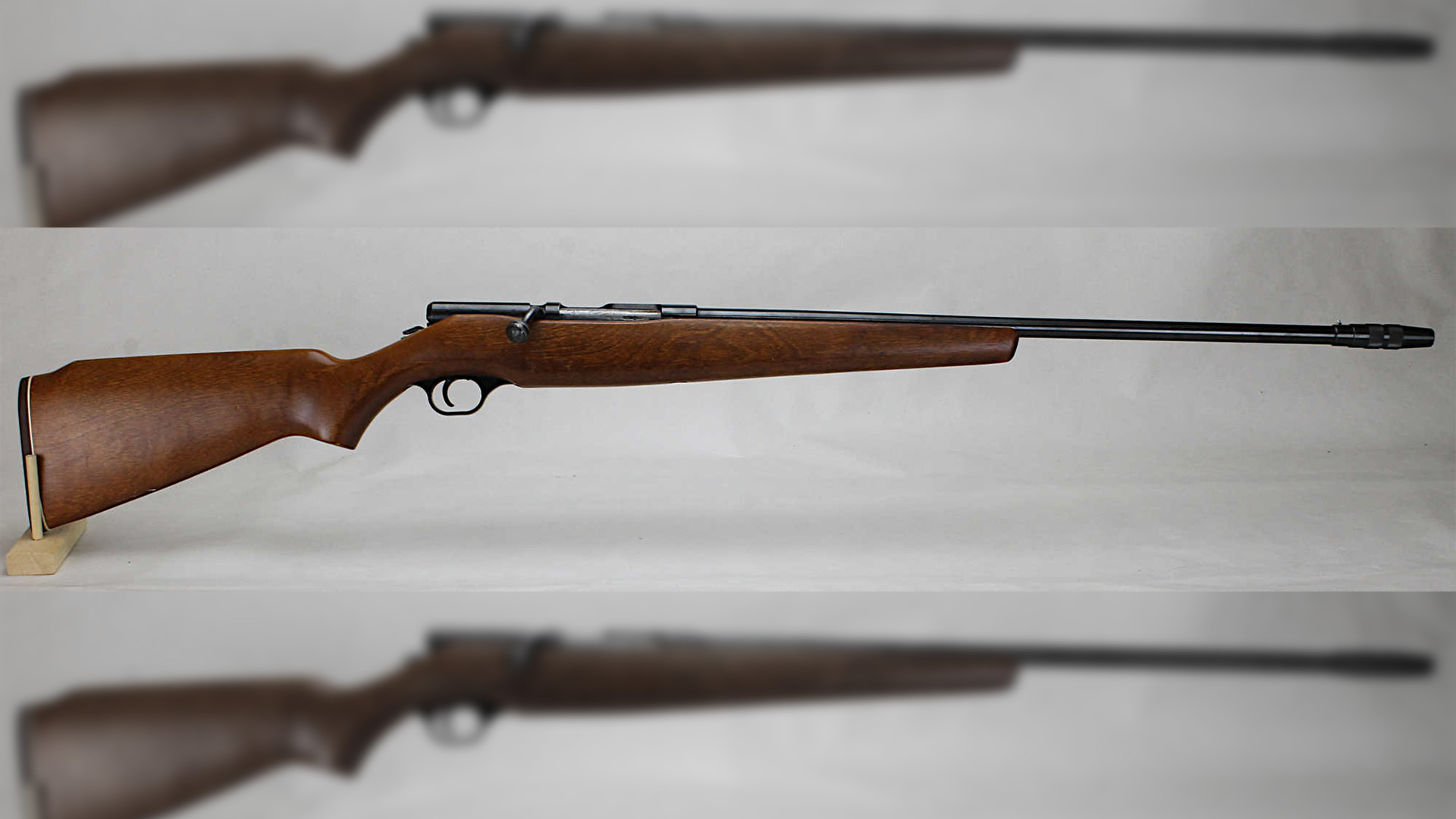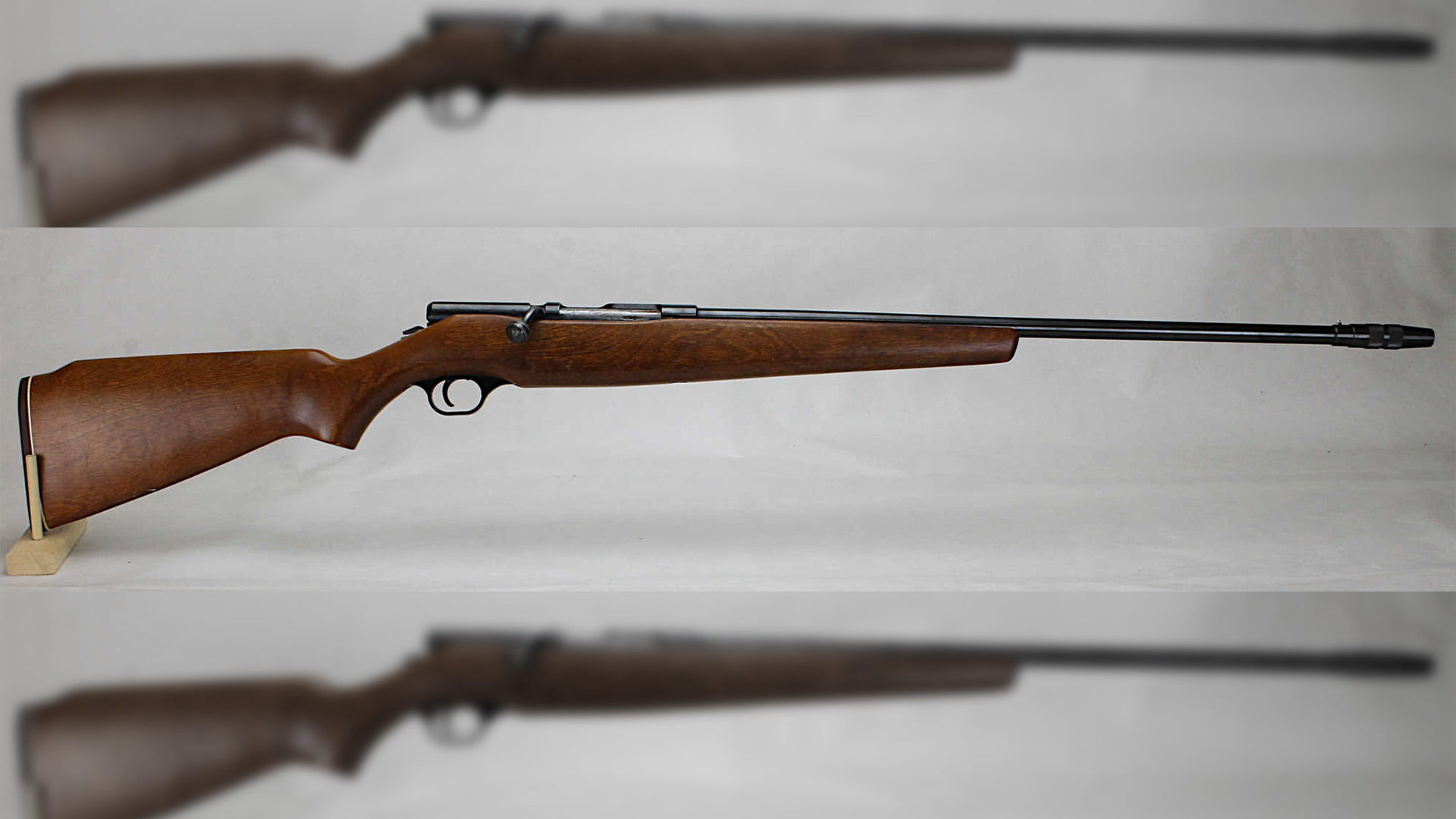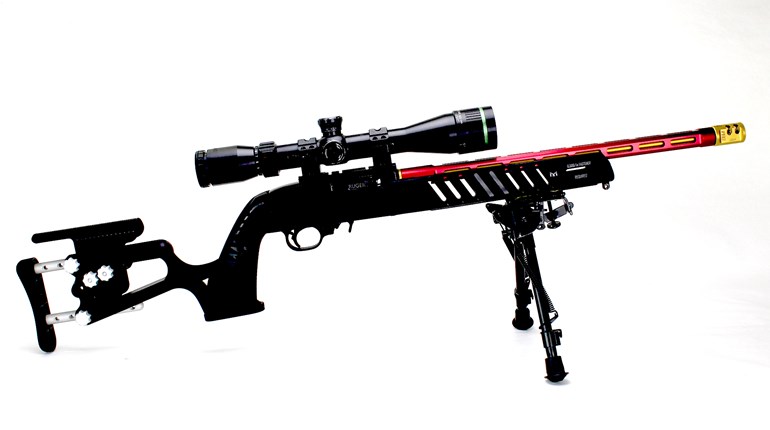
You still have time to sign up for this year’s Civilian Marksmanship Program’s Smallbore Postal Match, which ends April 21 when mail-in targets are due back to CMP. For a $5 match fee, CMP will send you targets and match instructions, and you don’t have to participate in a formal club range match—you can shoot as a lone individual whatever day you wish before deadline. It’s an inexpensive introduction to Smallbore competition, fired at 50 feet.
Postal matches have been around longer than Smallbore competition. Clubs throughout the country in the 19th century routinely challenged each other, shooting on their home ranges and sharing scores and results through the mail. Competitions back then were most often Schuetzen-style—offhand at 200 yards. When short-range .22 Long Rifle Smallbore competition rose in popularity in the 20th century, postal matches became a common event for that discipline. Postal matches have been on the wane during the past few decades, but they never fully went away, being carried on occasionally by Smallbore and by “special interest” clubs or organizations such as cast bullet shooters.

Sometimes trophies also exchanged hands back and forth through the mail to occupy a visible place of honor in a winning club’s clubhouse for a season or two, and clubs attached considerable pride to the outcomes of these often annual postal matches. To be frank, the nature of a postal match creates an obvious opportunity to cheat, but partly because matches were run formally, one would be hard-pressed to find any serious reference to cheating by a club or individual. The same is true today, and with the advent of impartial electronic scoring such as Orion and Eley-X, the postal match is gaining in appeal.
SHOOTING SOLO
But what if you don’t have a local gun club, or your club does not run Smallbore matches? This Spring, CMP is conducting a Smallbore Postal Match open to the individual shooter lacking such support.
“You can shoot the postal as an individual,” CMP Program Coordinator Alana Kelly said in an email exchange. “We have plenty of athletes who don’t belong to a club that participate and just go to their local gun range.”
The process is simple. Register for the match online and include the $5 match fee. If you don’t yet have an account at CMP, you can create one in about 60 seconds when you register with name, address, birthdate and password. CMP then mails you targets bearing your name, competitor number and your chosen competition, either Three-Position, Prone Sling or Prone F-class. Shoot the targets in accordance with the instructions (summarized on a single page and included with the targets) and either mail them back to CMP or download the Orion software to score your targets and send electronically.
For information on approved rifle features and other gear, download the free CMP Smallbore Rifle Competition rulebook. Rules require competitors to single-load during slow-fire stages, and I found I can use the same modified Ruger Precision Rimfire rifle that I use for .22 long-range competition by simply using a single-round “sled” in place of the usual 10-round magazine.
ONE-SHOT GROUPS?
I received the targets from CMP within a week of registering. They are printed 10 to each sheet of 8½ x 11 heavy manila paper, each individual F-Class target measuring 1¼-inch in diameter, with two targets in the center provided for sighters. Being a 60-shot match, I received six target sheets. Competitors fire one round at each individual target, which are graduated with seven scoring rings, the center ring being smaller in diameter than a .22-caliber bullet. One might think that shooting a target at 50 feet using a 24X scope and a bipod would lack challenge, but with such minuscule target scoring rings, one would be wrong.
This CMP Smallbore Postal Match is an excellent opportunity to see if Smallbore Rifle competition might interest a youth—or yourself—without a major money commitment in rifle, ammo and gear. It’s also an opportunity to shoot in what we could call no-stress, “semi-formal” competition. That is, the CMP Smallbore Postal Match is formal in its rules, procedures and scoring, but is informal in that results don’t affect classification, nothing is at stake and the $5 match fee is pocket change compared to match fees we’re used to paying for formal competitions. Plus, we still get to challenge ourselves as competition shooters.
INVITE A NEWBIE
In addition to those no-stress benefits, I coaxed a new-shooter friend into signing up. Leo is so new to shooting that he’s fired maybe 200 rounds, all .22 Long Rifle from my guns and, of course, has never fired in competition. The postal match is new to me, too, and I joked with Leo that I had invited him to shoot so that I could be fairly confident of outscoring at least one person in the nationwide competition. Being a new shooter, I reasoned shooting prone from a bipod would provide Leo more confidence in shooting well, so we went F-Class. So far, he’s shot well practicing on similar Eley X-shot targets and is a bit fascinated with the concept of the wind blowing bullets off course and the challenge of wind-doping.
When Leo receives his targets from CMP, we’ll share my rifle, time each other and take turns calling the match in accordance with the rules and fire it outdoors at 50 feet on a pleasant Spring day. We’ll be at a wind disadvantage over competitors shooting indoors, but winning the match is neither the goal nor the purpose of our shooting. The purpose is to introduce a new shooter to competition, and the goal is to shoot a new no-stress match while enjoying the camaraderie of a shared interest.
You can find the 2025 CMP Smallbore Postal Match program here. If you’re reading this too late to register, there will likely be a 2026 CMP Smallbore Postal Match, but you’ll have to wait a year—which gives you plenty of time to find and bring out a newbie.

































